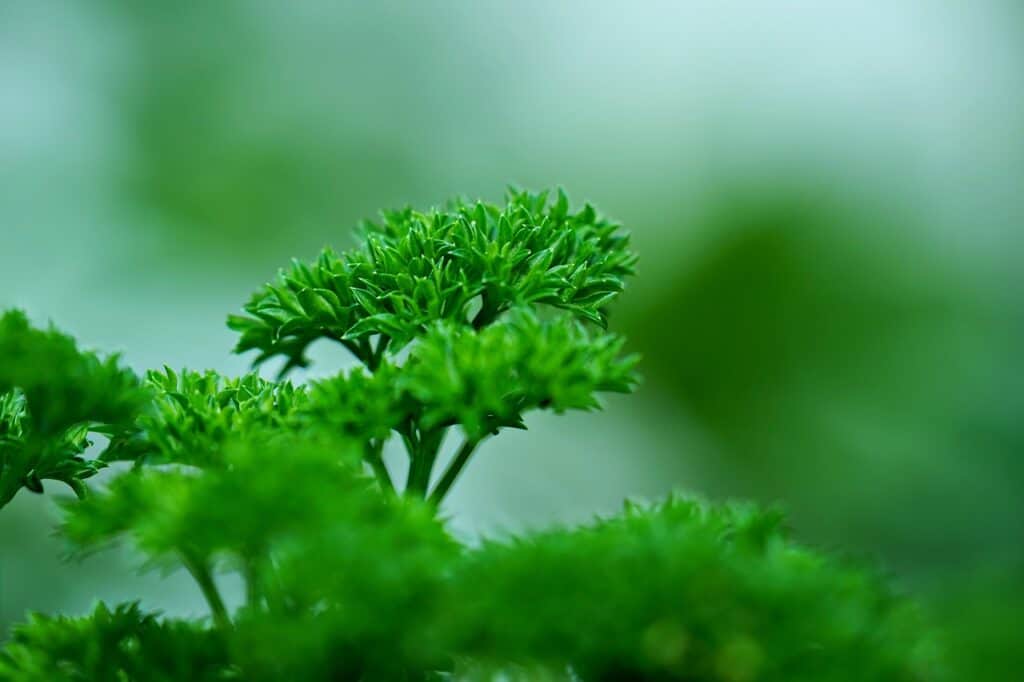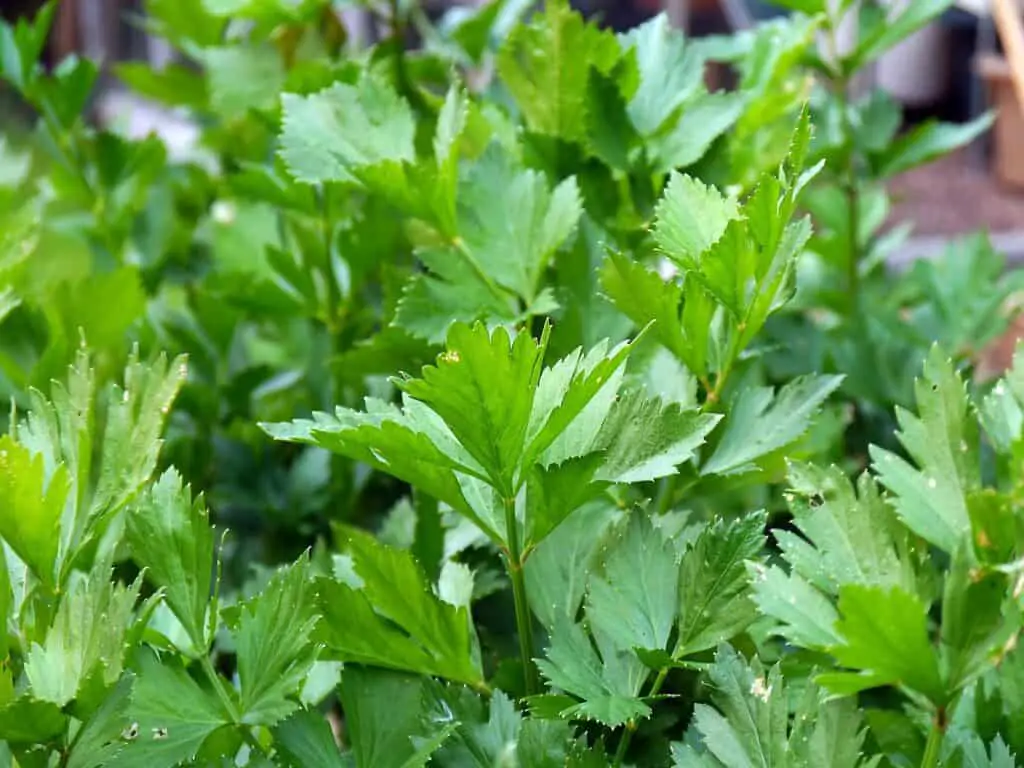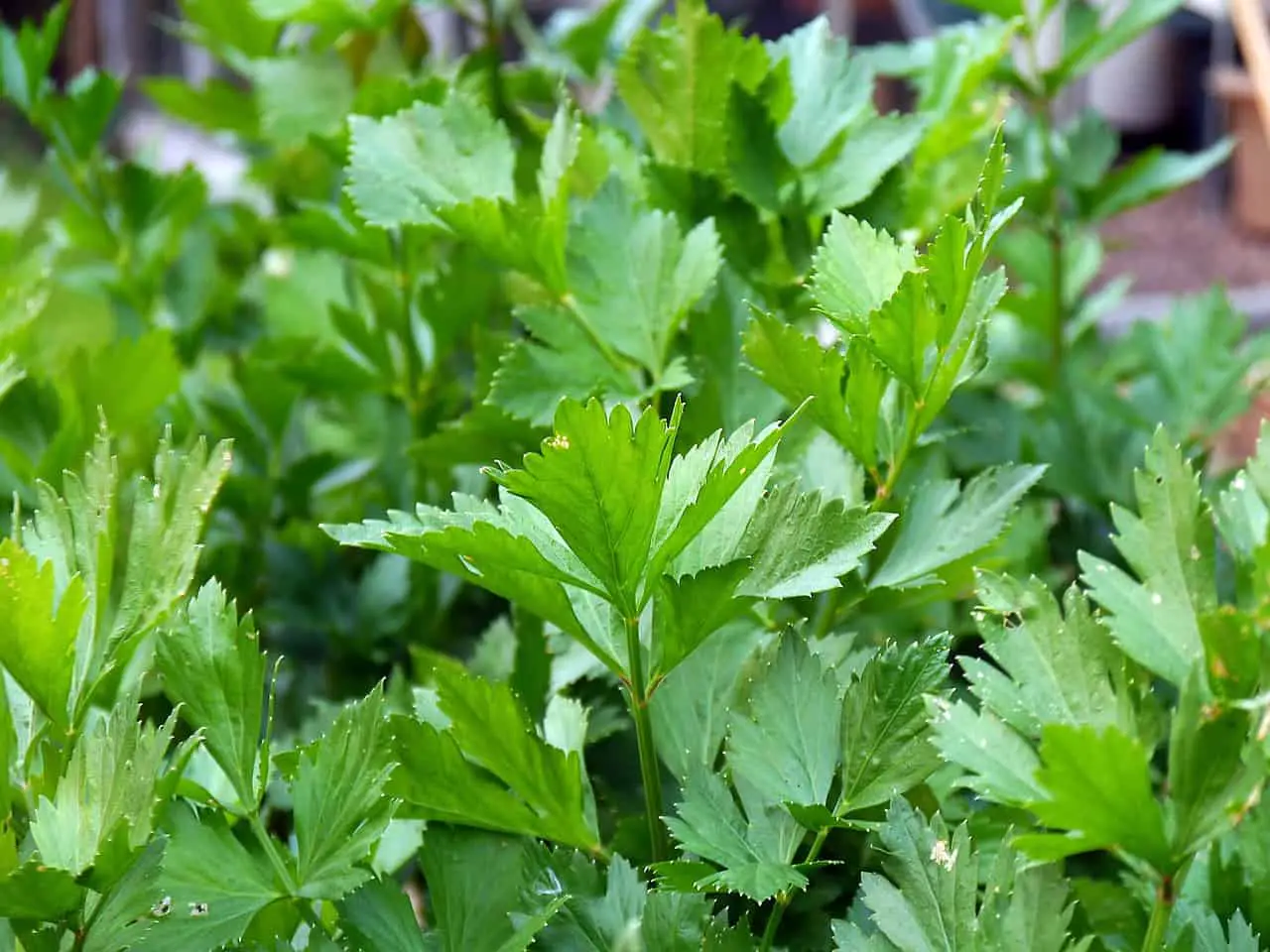Parsley, a vibrant green herb with a mild, fresh flavor, often finds itself as a garnish on plates. However, its role extends beyond mere decoration. With two main varieties, curly and flat-leaf (Italian), parsley adds a subtle, earthy essence to a variety of dishes. Rich in vitamins, particularly vitamin K and vitamin C, parsley not only enhances the visual appeal of meals but also contributes a touch of nutritional value. This versatile herb can be used in salads, sauces, and soups, providing a delightful and aromatic lift to culinary creations. Whether used as a flavor enhancer or a decorative element, parsley stands as a culinary essential, proving that its significance goes well beyond its role as a simple garnish.

Parsley Smells Like Celery
It’s not uncommon for individuals to observe that parsley smells like celery. This shared aromatic essence is rooted in the Apiaceae family, where both parsley and celery belong. Similar aromatic compounds, like limonene and myrcene, contribute to this olfactory connection, creating a sensory link between these culinary companions.
Cow Parsley Smell
Cow parsley, a wild relative of cultivated parsley, introduces another layer to the aromatic exploration. While traditional parsley is prized for its fresh and mild scent, cow parsley may emit a slightly different fragrance. The smell of cow parsley is often described as earthy, with hints of grassiness. Understanding the aromatic distinctions between cow parsley and common parsley provides insights into the diverse aromatic profiles within the parsley family.
Use for Parsley Stems
While parsley leaves are commonly utilized in culinary applications, the stems should not be overlooked. Parsley stems carry a concentrated version of the herb’s flavor and aroma. They can be finely chopped and incorporated into dishes like soups, stews, or stocks, adding a robust parsley essence. This efficient use of parsley stems minimizes waste and maximizes the aromatic potential of this herb in various culinary creations.
How to Use Lovage
Lovage, a member of the Apiaceae family sharing aromatic similarities with parsley and celery, presents a unique opportunity for culinary experimentation. The leaves and stems of lovage boast a savory and celery-like flavor, making them a versatile addition to various dishes. From vibrant salads to hearty soups, lovage can be finely chopped and incorporated, offering a distinctive aromatic profile to elevate culinary creations. Exploring the culinary potential of lovage adds depth to the understanding of herbs within the Apiaceae family, providing herb enthusiasts with a flavorful journey in their gastronomic endeavors.

FAQ
What causes the celery-like aroma in parsley?
The aromatic similarity between parsley and celery can be attributed to their shared family, Apiaceae. Both herbs contain similar aromatic compounds, creating an olfactory connection that leads to the perception that parsley smells like celery.
Are there other herbs with a scent similar to celery or parsley?
Lovage, another member of the Apiaceae family, shares aromatic similarities with parsley and celery. The leaves and stems of lovage can be used in a manner similar to parsley, adding a savory and celery-like flavor to dishes. From salads to soups, lovage proves to be a versatile herb in the kitchen.
Conclusion
In the aromatic journey of herbs, the connection between parsley and celery adds a layer of sensory delight to culinary explorations. Whether savoring the fresh essence of parsley leaves, experimenting with the earthy aroma of cow parsley, or making the most of parsley stems in cooking, this herb family offers a spectrum of flavors and scents. As herb enthusiasts embrace the aromatic interplay, they discover the nuanced world within the Apiaceae family, where parsley and its aromatic companions bring diverse and delightful experiences to the table.

